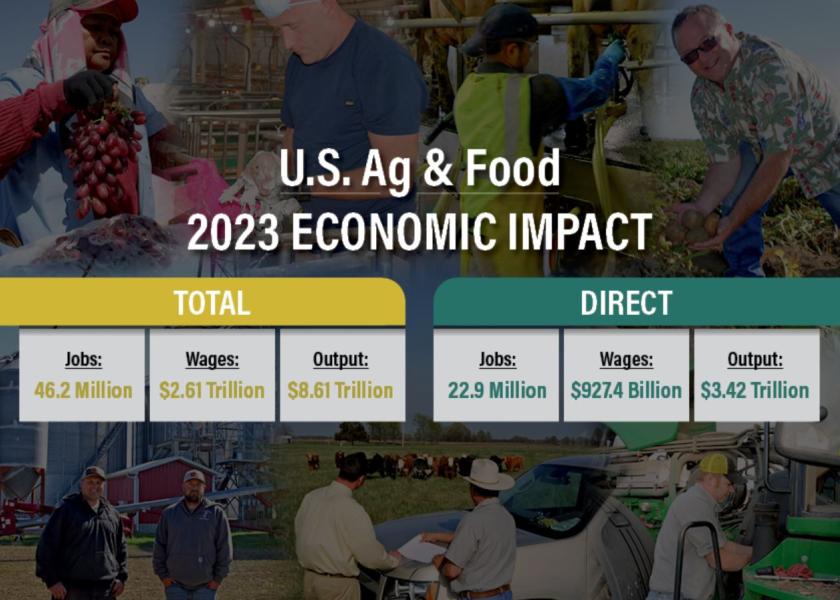How Important is U.S. Ag and Food to the Economy?

As the saying goes, “numbers don’t lie,” and this rings especially true in the 2023 Feeding the Economy report, showing the economic importance of U.S. food and agriculture to communities throughout the nation.
Sponsored by 25 food and agriculture groups across all areas of the food supply chain, the report illustrates the food and agricultural impact on local and nationwide economic activity, underscoring the sector’s resilience and reliability amid a number of global and domestic disruptions.
“Feeding the Economy demonstrates how agriculture is connected to each stage of the supply chain, every item in the grocery store and relied upon by multiple other indispensable industries. The report provides insightful data and research on how the food and agriculture industry consistently generates a positive trade balance as well as millions of jobs while boosting economic vitality in rural and urban areas,” says Mike Seyfert, president and CEO of the National Grain and Feed Association.
Economic Output
Showing an increased economic output in all 50 states compared to the 2022 report, the industries contributed to over $8.6 trillion, nearly 20%, of the country’s economic activity. In addition, the industries accounted for over $202 trillion in export value.
Reflecting a rebound in national economic activity, the largest total output gains were from Hawaii (31%), North Dakota (26%), New York (23%), Nevada (22%) and Florida (21%), according to the report.
Agriculture and food businesses also contribute over $947 trillion to federal and state taxes, including $565.3 trillion and $382.5 trillion, respectively.
Jobs and Wages
Despite the economic challenges and disruptions associated with the COVID-19 pandemic, in 2023, a total of 22,924,189 million jobs are tied directly to the food and agriculture sector, claiming $927.4 billion in wages. This contributes to a total of over 46.2 million jobs and $2.6 trillion in wages supported across the whole supply chain, increasing nearly 2% since 2019.
Productivity
“The strength and growth highlighted in this year’s report reinforce that agriculture is evolving and innovating to meet the demands of the 21st century,” the report says.
USDA notes that between 1948 and 2019, land use for agriculture decreased by 28% while land productivity grew nearly four times and labor productivity grew more than 10 times, the report adds, with agriculture’s total factor productivity growth rate among the highest of U.S. sectors.
While producers raise crops, produce and livestock on two of every five acres of U.S. soil, millions of other U.S. workers fulfill jobs in over 200,000 food manufacturing, processing and storage facilities to strengthen the food supply chain across the world. Additionally, approximately 200,000 retail food stores and over 1 million restaurant locations provide food for communities from coast to coast.
The sheer number of jobs and total of wages, taxes and export values highlight the vitality of the industry to our nation. However, for many Americans, both rural and urban, agriculture and food are more than simply a paycheck.
“American agriculture is really the foundation of our lives and our economy. This study reveals the numbers, and maybe some of the spirit, of this one indispensable sector,” says Roger Cryan, chief economist at the American Farm Bureau Federation.
The full report can be found on the Feeding the Economy website.







